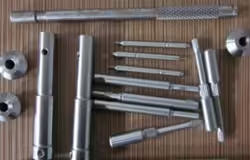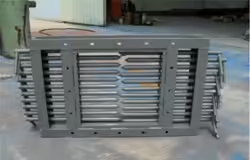
What’s 5 Unmatched Qualities of Acero Q235 in Building Structures?
Table of Contents
Introduction
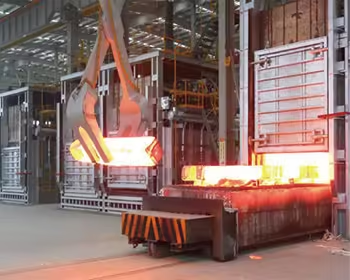
In the realm of building structures, the choice of materials plays a pivotal role in determining the success and longevity of a project. Among the plethora of materials available, Acero Q235 has emerged as a remarkable option, offering a unique set of qualities that make it stand out. This blog will delve into the five unmatched qualities of Acero Q235 in building structures, exploring how it can revolutionize the construction industry.
Understanding Acero Q235
Chemical Composition
Acero Q235 is a type of carbon structural steel. Its chemical composition is carefully balanced to provide specific properties. It typically contains elements such as carbon, silicon, manganese, sulfur, and phosphorus. The carbon content is relatively low, which contributes to its good weldability and formability. The presence of other elements in controlled amounts helps in enhancing its strength and durability.
Production Process
The production of Acero Q235 involves a series of well – defined steps. It starts with the melting of raw materials in a furnace. After melting, the steel is refined to remove impurities. Then, it is cast into various shapes such as billets, blooms, or slabs. These semi – finished products are further processed through rolling, forging, or other forming methods to obtain the final steel products with the desired dimensions and properties.
Unmatched Quality 1: High Strength – to – Weight Ratio
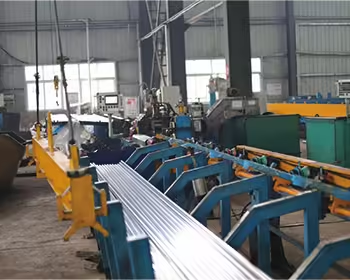
Explanation of the Ratio
One of the most significant qualities of this steel is its high strength – to – weight ratio. This means that it can withstand a large amount of load while being relatively lightweight. In building structures, this is crucial as it allows for the construction of taller and more complex buildings without adding excessive weight. For example, in high – rise buildings, using it for structural components can reduce the overall weight of the building, which in turn reduces the load on the foundation and other supporting elements.
Applications in Building Structures
In building construction, this steel is widely used in the construction of frames, columns, and beams. In large – span structures such as stadiums and exhibition halls, its high strength – to – weight ratio enables the creation of open and spacious interiors without the need for excessive support columns. This not only enhances the aesthetic appeal of the building but also provides more flexible space utilization.
Unmatched Quality 2: Excellent Weldability
How Weldability Works
Weldability is an important property in building structures as it allows different steel components to be joined together securely. Acero Q235 has excellent weldability, which means that it can be easily welded using various welding methods such as arc welding, gas welding, and resistance welding. During the welding process, the steel can form a strong and reliable joint with other steel parts without significant defects such as cracks or porosity.
Importance in Construction
In construction, the ability to weld this steel easily simplifies the construction process. It allows for the pre – fabrication of steel components in the factory, which can then be transported to the construction site and quickly assembled. This reduces the construction time and cost, as well as improves the quality control of the steel structures. For example, in the construction of steel bridges, the excellent weldability of this steel enables the efficient assembly of large – scale bridge components.
Unmatched Quality 3: Good Ductility
Definition of Ductility
Ductility refers to the ability of a material to deform plastically under tensile stress without breaking. Acero Q235 has good ductility, which means that it can be stretched, bent, and formed into various shapes without fracturing. This property is essential in building structures as it allows the steel to absorb energy during seismic events or other dynamic loads.
Role in Seismic – Resistant Buildings
In seismic – prone areas, the ductility of Acero Q235 is of utmost importance. When an earthquake occurs, the building structure is subjected to large – scale dynamic forces. The ductile nature of Acero Q235 allows the steel components to deform and absorb the seismic energy, reducing the risk of sudden collapse. For example, in the design of seismic – resistant buildings, the columns and beams made of Acero Q235 can undergo significant plastic deformation during an earthquake, protecting the overall integrity of the building.
Unmatched Quality 4: Corrosion Resistance
Mechanisms of Corrosion Resistance
Although this is a carbon steel, it has a certain degree of corrosion resistance. This is mainly due to the formation of a passive oxide layer on its surface. When exposed to the atmosphere, the iron in the steel reacts with oxygen to form a thin layer of iron oxide, which can prevent further corrosion. Additionally, the addition of certain alloying elements in this steel can also enhance its corrosion resistance.
Impact on Building Lifespan
In building structures, corrosion can significantly reduce the lifespan of the steel components. The corrosion resistance of Acero Q235 helps to extend the service life of the building. For example, in coastal areas where the air is highly humid and contains a large amount of salt, using Acero Q235 with good corrosion resistance can prevent the steel from rusting and deteriorating quickly, ensuring the long – term stability of the building.
Unmatched Quality 5: Cost – Effectiveness
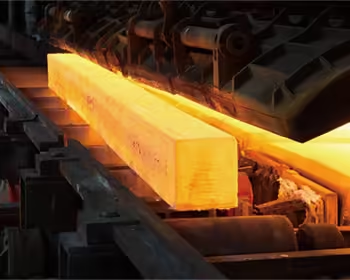
Cost Analysis
Acero Q235 is a cost – effective material in building structures. Compared with some high – performance alloy steels, its raw material cost is relatively low. At the same time, its excellent workability and weldability reduce the processing and construction costs. For example, the ease of welding means that less labor and equipment are required during the construction process, which further reduces the overall cost.
Economic Benefits in Construction Projects
In construction projects, cost – effectiveness is a key consideration. Using Acero Q235 can help developers and contractors save a significant amount of money without sacrificing the quality of the building. This allows for more projects to be carried out within a limited budget, promoting the development of the construction industry.
Comparison Table: Acero Q235 vs Other Building Materials
| Material | Strength – to – Weight Ratio | Weldability | Ductility | Corrosion Resistance | Cost – Effectiveness |
|---|---|---|---|---|---|
| Acero Q235 | High | Excellent | Good | Moderate | High |
| Stainless Steel | High | Good | Good | High | Low |
| Aluminum Alloy | Medium | Good | Good | High | Medium |
Conclusion
In conclusion, Acero Q235 offers five unmatched qualities in building structures: high strength – to – weight ratio, excellent weldability, good ductility, corrosion resistance, and cost – effectiveness. These qualities make it a preferred choice for a wide range of building projects, from small – scale residential buildings to large – scale commercial and industrial structures. By understanding and utilizing these qualities, the construction industry can achieve more efficient, durable, and cost – effective building solutions.
FAQ
Q1: Can Acero Q235 be used in extreme cold environments?
A: Yes, Acero Q235 can be used in cold environments. However, its toughness may be affected at extremely low temperatures. Special precautions such as using appropriate heat treatment or adding alloying elements may be required to ensure its performance in such conditions.
Q2: How to ensure the quality of Acero Q235 during construction?
A: To ensure the quality of Acero Q235 during construction, it is necessary to purchase the steel from reliable suppliers. Quality control measures such as material testing, inspection of welding joints, and compliance with relevant construction standards should be strictly implemented.
Q3: Is Acero Q235 suitable for long – span bridges?
A: Yes, Acero Q235 is suitable for long – span bridges. Its high strength – to – weight ratio and excellent weldability make it a good choice for the construction of bridge components. However, for very large – scale and high – performance bridges, a combination of Acero Q235 with other high – strength materials may be considered.
Q4: What is the maximum load that Acero Q235 can bear in building structures?
A: The maximum load that Acero Q235 can bear depends on various factors such as the cross – sectional shape, size, and the way of loading. Engineering calculations and structural design are required to accurately determine the load – bearing capacity of Acero Q235 in specific building structures.
Q5: Can Acero Q235 be recycled?
A: Yes, Acero Q235 is a recyclable material. Recycling steel not only helps to conserve natural resources but also reduces energy consumption and environmental pollution. After the end – of – life of a building, the Acero Q235 components can be recycled and reused in new construction projects.





